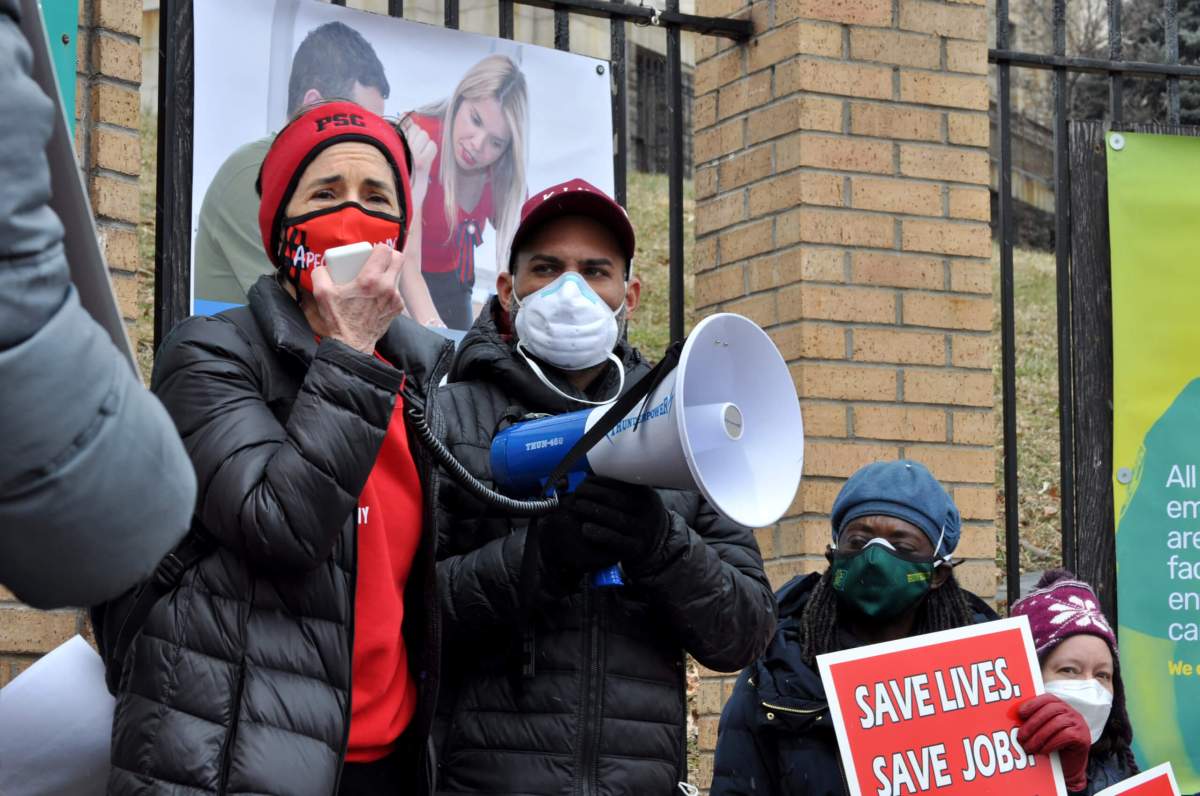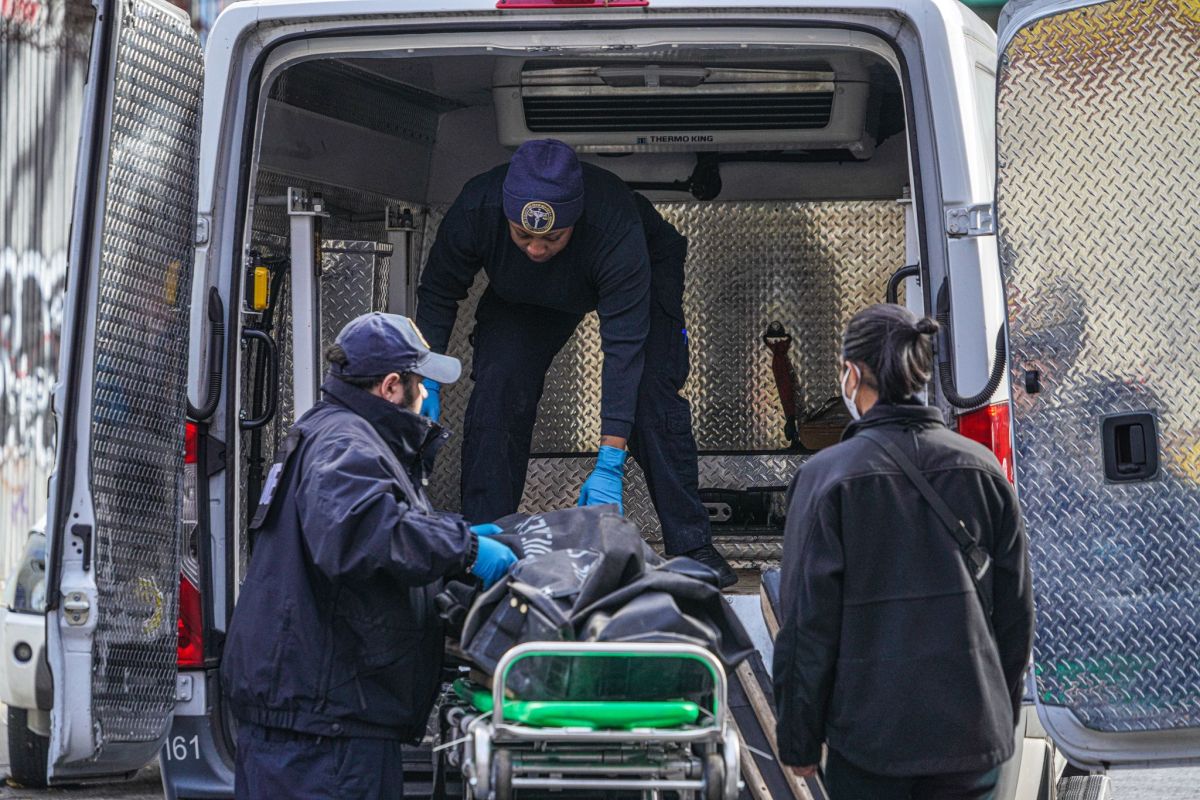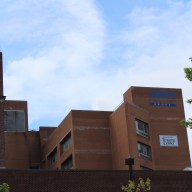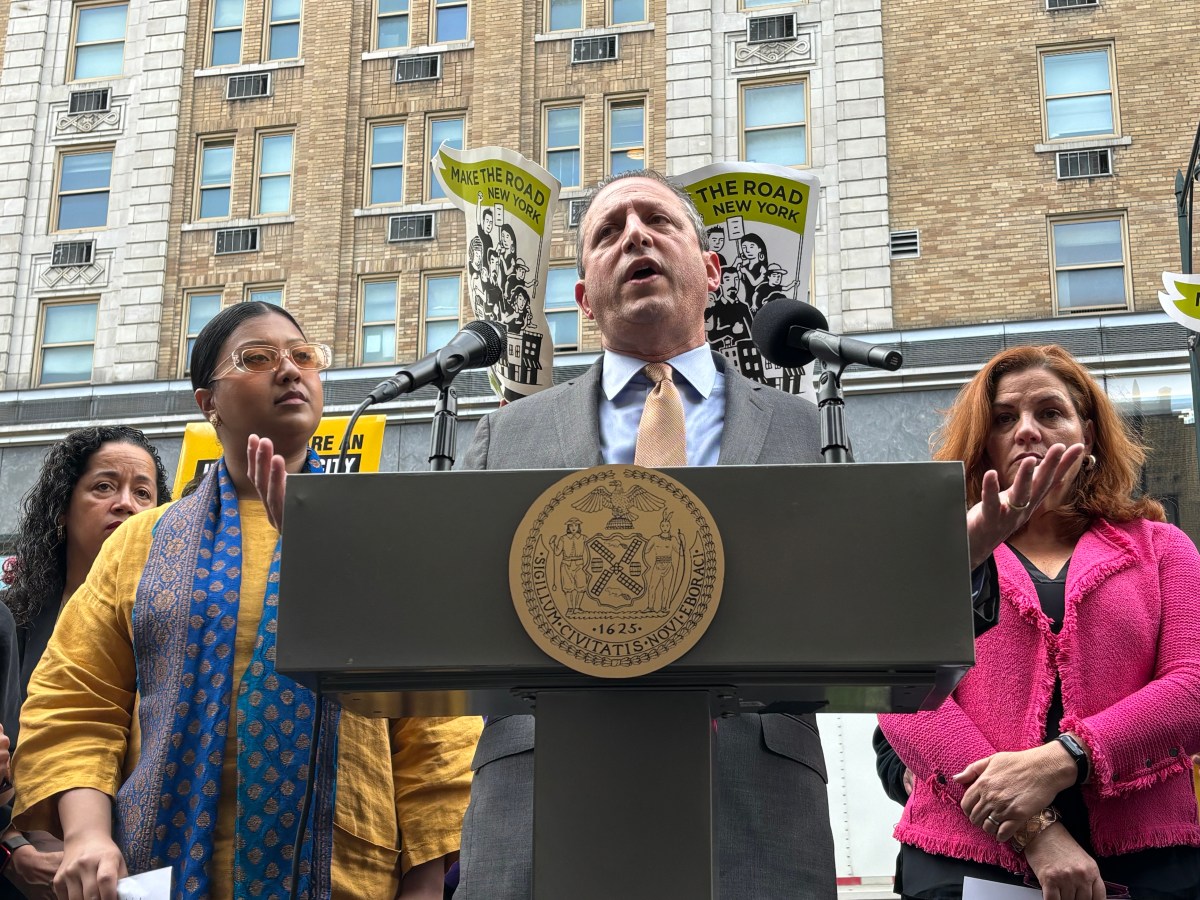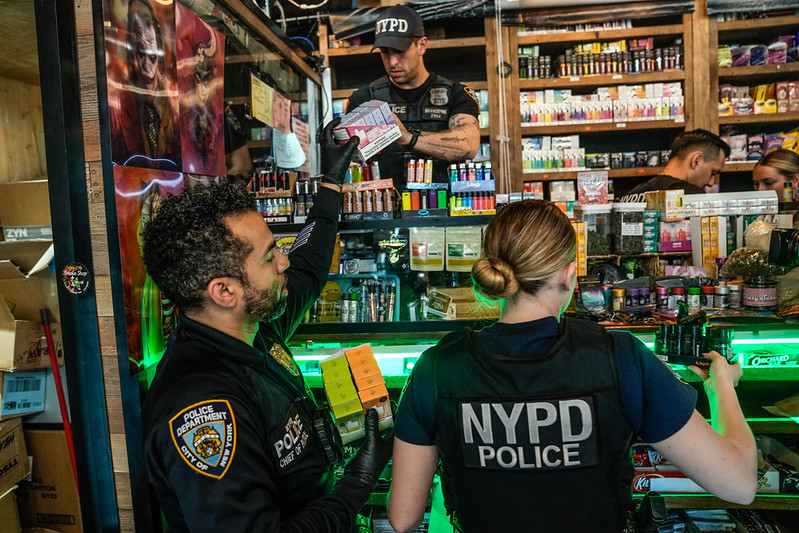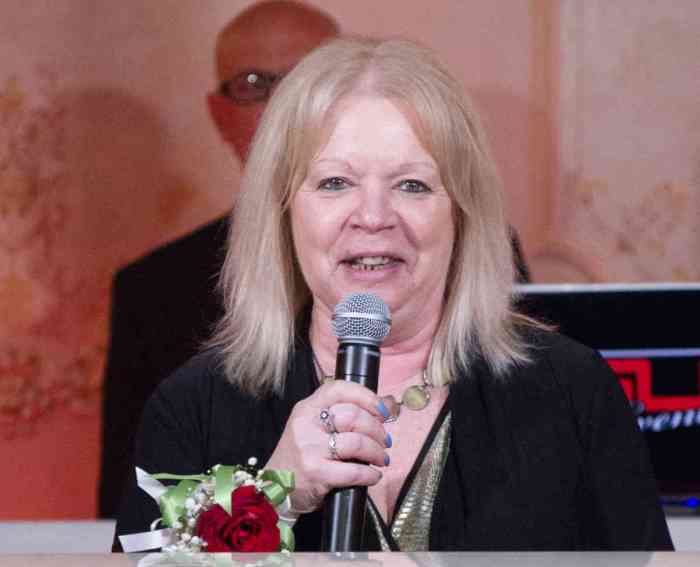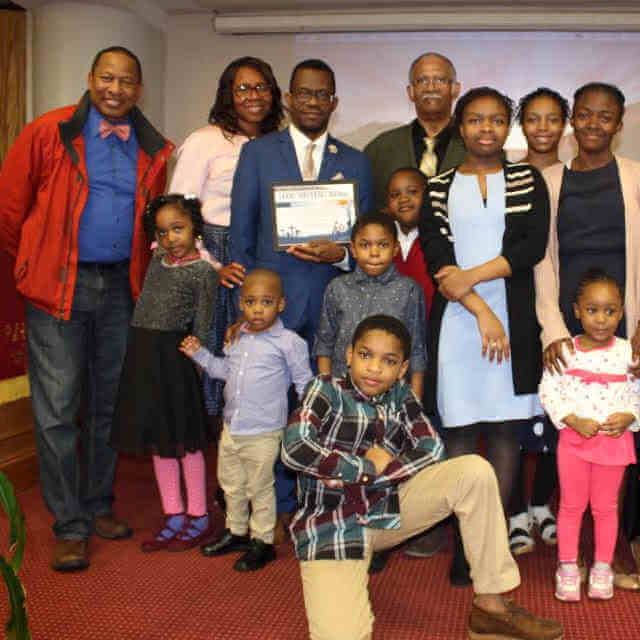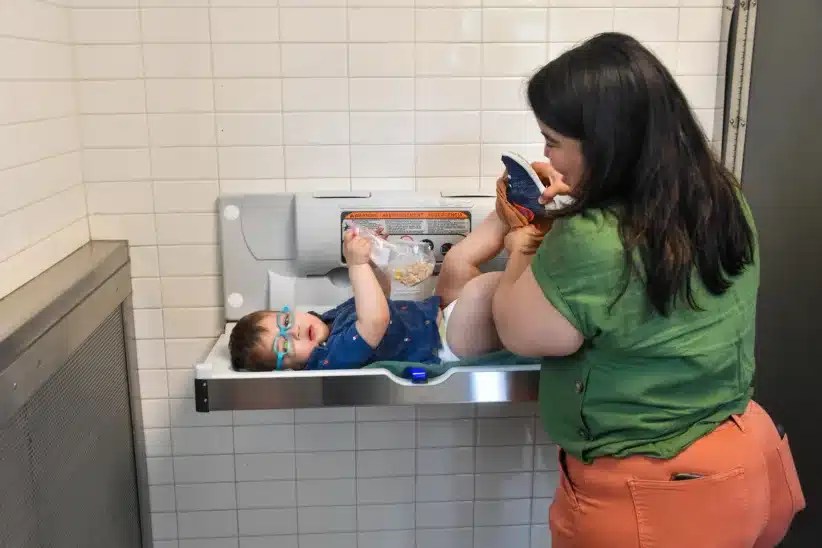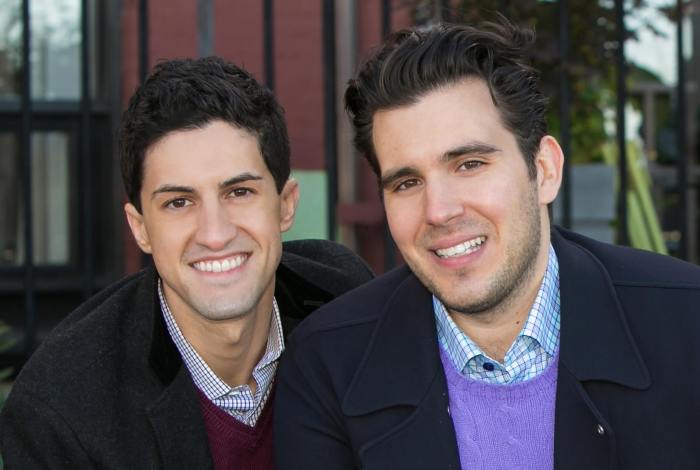The chancellor’s lawn looked a little different after the weekend. Three homemade signs had been left on the grass. Each had a message to say: “No Class Cancellations. No Layoffs.” “CUNY students deserve safe campuses.” “Felo Respond To Student Demands.”
The residence of Félix V. Matos Rodríguez, the chancellor of the City University of New York (CUNY), was visited by roughly 40 people on Feb. 6 for a protest organized by Rank and File Action, a group that describes themselves as “militant rank & file activists at CUNY.”
Faculty and students present on the cold Sunday afternoon blasted the CUNY administration for ignoring many of their demands. The protest was just one of several organized in the past week calling for safer reopening measures and safety nets for students and adjunct workers.
Members of the Professional Staff Congress, the union representing CUNY faculty, gathered outside of Bronx Community College (BCC) the week before, on Jan. 28, to demand improved public health and safety at all campuses.
Maeve Campbell, a former Borough of Manhattan Community College student, spoke about enduring difficult years at her two-year junior college.
“As CUNY students, we have a little joke,” Campbell said. “We call it getting CUNY’d. It’s when you don’t graduate on time because of cuts, overworked advisors, lack of funds (and) bureaucratic mismanagement. Despite our best efforts — despite having a 4.0 in my case — sometimes you don’t graduate on time.”
Sharon Utakis is already exhausted. The spring semester has only just begun, but the English professor and PSC vice president is mainly tired of how CUNY is handling the pandemic.
“Here at BCC, there have been so many health and safety issues over the years, even before the pandemic,” Utakis said. “Three years ago, I was taking pictures of the makeshift classrooms we were using when they shut down Colston Hall because the pipes had burst and there was mold.”
Poor ventilation, aged pipework and toxic mold have been long-standing issues at BCC, a school attended by mostly Black and Brown students. Faculty at the Jan. 28 protest said the conditions have barely improved, and then worsened during the COVID-19 pandemic.
Yasmin Edwards, a biology professor at BCC, said there’s several inoperable HVAC systems in campus buildings, including Loew Hall and Nichols Hall, which was closed off entirely after lack proper ventilation and mold was discovered. Nichols Hall recently reopened, and Edwards said there’s a slight improvement with installed air purifiers.
Edwards said BCC administration attempts to work with faculty, but CUNY still continues to reject requests for medical-grade masks, virtual learning and capital improvements — namely heating systems and proper ventilation.
“We’re either too cold or too hot,” Edwards added.
There hasn’t been any ventilation data shared with the union, either, and the city Department of Education’s ventilation report database for its public schools appears to be experiencing technical issues.
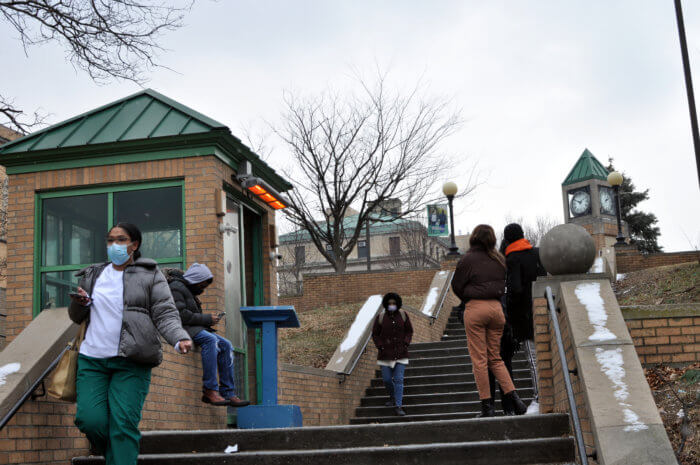
More demands in the CUNY campaigns, including the New Deal for CUNY, include safety nets for adjunct professors, increased online courses, remote work options, widely available COVID-19 protection measures like free rapid-testing kits, and a return to the days when CUNY was tuition-free (the school system began charging tuition in 1976).
Bronx Times reached out to Bronx Community College for comment regarding the demands. In a written response, CUNY spokesperson Richard Ginsberg stated, “We have no comment at this time.”
There had previously been some hope that community colleges would provide two tuition-free years at the federal level, but it’s now almost certain that the provision will be left out of the Build Back Better plan, based on comments by the first lady Jill Biden Monday.
While a little under 150 classes at BCC have been converted online for the spring semester, activists say it’s not enough to prevent more students from dropping out this semester.
Student enrollment at junior community colleges, like BCC, has dropped by 42% compared to the previous school year’s enrollment, according to some union members.
See also: As CUNY opens for spring semester on Friday, tensions continue to rise
Senior colleges, like John Jay College of Criminal Justice in Manhattan where Olivia Wood is an adjunct teacher, have seen higher enrollment numbers.
But Wood, who helped plan recent CUNY protests, said her school isn’t immune to issues that some of the junior colleges are experiencing. Take ventilation, she said.
“The issue I’m running into for my class is we have a ventilation system on really high, which is good,” Wood said. “But it’s so loud that I can’t hear my students. And I don’t have any control over that.”
Wood said many people in her community she’s talked with believe the issues underlying low enrollment are disproportionately impacting community colleges, which tend to be populated by students from underserved and marginalized backgrounds, and those with specific learning needs. These students often face more challenges and as result, are more likely to put their education on hold and drop out.
Then there is the matter of the layoffs.
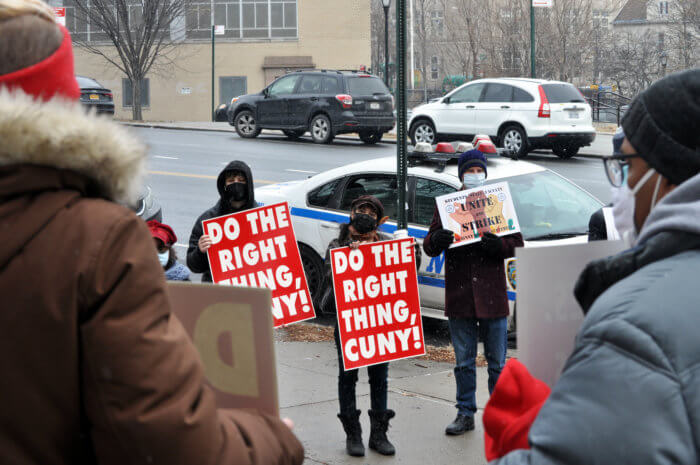
The faculty union believes CUNY administrators are “encouraging mass course cancellations and in some departments effectively firing all adjuncts who don’t have a three-year appointment.”
“So many adjuncts, hundreds, as far as we can tell, ended up getting laid off,” Wood said, referring to the new school year. “They were reappointed, given classes, and then not enough students signed up for them; or not enough students signed up for sections taught by full timers. So those got canceled, and the adjunct sections given to the full timers. This doesn’t just mean loss of income, it also often means loss of health insurance.”
Rémysall Salas, an adjunct professor at Borough of Manhattan Community College (BMCC), gets it. One of his classes was recently canceled because of low enrollment, an issue he said worsened due to COVID-19.
“I do sympathize,” Salas said. “There’s been one class I missed out on in the pandemic.”
The New Deal for CUNY campaign carves out legislation supporting adjunct professors and proposes establishing a 65-1000 ratio of full-time faculty to students, said Salas, who works on the policy side of the campaign.
“We want to make sure there’s more job security,” Salas said. “Adjuncts want to become full time. You don’t know what’s going to happen next semester. But if you’re a full-time professor, you know you’re going to have your classes.”
Faculty and students leading the CUNY campaigns are also asking for full transparency on how CUNY is spending its pandemic relief funds, of which CUNY’s three Bronx schools received more than $1 billion total in relief funds, according to CUNY figures published in April 2021.
The PSC union found last April that CUNY reported using $51 million from its institutional budget, just 5% of what is actually available for those needs. Since then, quarterly reports published by CUNY show $397 million has been spent on institutional needs, including providing emergency grants and laptops for students, and improving campus safety and operations.
But the federal stimulus hasn’t been the only financial support CUNY has received during the pandemic.
Two CUNY schools, Lehman College and BMCC, were each gifted $30 million by MacKenzie Scott. The philanthropist also donated $15 million to Hostos Community College, which has a majority Hispanic student population. The donations were the largest in each of the school’s histories.
State Assemblywoman Yudelka Tapia, whose 86th District includes the neighborhood where BCC is located, acknowledged the role BCC has played in advancing Black and Brown students.
“I was one of them,” said Tapia, but “we need more testing for every student, every staff in all CUNY schools. We don’t have the ventilation needed for our students to be safe. We have fought so hard for that. The money’s there.”
Some faculty say they have lost hope in trying to reason with the CUNY administration.
“Most administrators don’t talk to RAFA (Rank and File Action),” Wood said. “They barely talk to the PSC leadership. So we’re in the process of scheduling meetings to figure out how we can connect with people to get them more involved in the union.”
Before she had arrived at the protest at BCC, Edwards had a troubling experience just outside of the campus.
“On my way here, I spoke to a CUNY student,” Edwards said. “That CUNY student said, ‘I am a single mom of two kids. I tried to enroll for classes online.’ She is now considering dropping out because she could not get the online sections she needed that would allow her to work, pay her bills, and take care of her children. There are consequences to bad leadership.”
Reach Sarah Belle Lin at sbellejourno@gmail.com. For more coverage, follow us on Twitter, Facebook and Instagram @bronxtimes.

